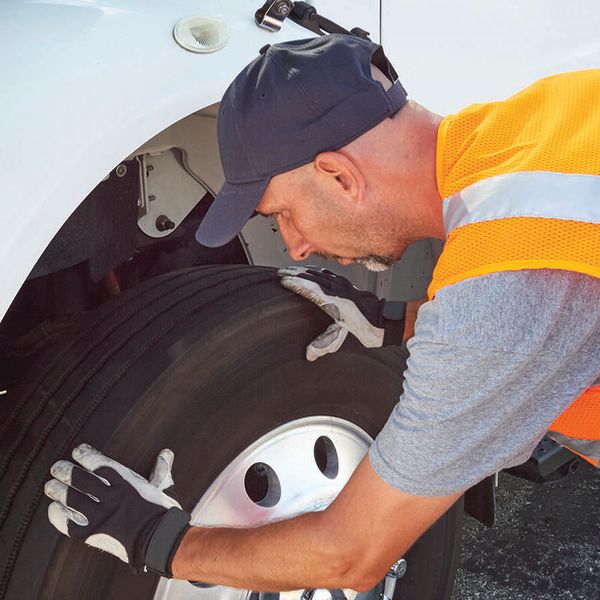Electric vehicle (EV) batteries – What you need to know
Electric motors are the heart of the EV. However, to maximize the return on an EV investment, it pays to learn the basics about the source of energy or blood for the heart – the battery packs.
An EV battery pack is a key to achieving energy efficiency from the electrical grid to movement down the road. According to fueleconomy.gov, EVs convert over 77 percent of electrical energy from the grid to power at the wheels. Fossil fuel vehicles convert about 12 to 30 percent of the energy from fuel to power at the wheels. Let's cover five frequently asked questions about EV batteries:
1. How long will batteries last?
EV battery capacity is rated in kilowatt-hours or kWh. Higher kWh ratings should equate to higher mileage or operating hours before recharging.
A few terms apply to the how long batteries will last:
Warranty – A typical warranty is eight years or 100,000 miles, but varies by manufacturer. EV warranties usually require the state of health (SOH) to be below 60 to 70 percent before a claim is allowed.
Range – Current commercial vehicle EV ranges on a single charge are between 150 to 250 miles. Several factors affect battery range on a full charge (see below).
Battery life – How many years a battery will last depends on how it is used and maintained. A battery's chemical makeup will also influence how it responds over time.
2. What factors reduce EV range?
These factors can affect the mileage or operating hours from a full charge:
- Auxiliary system use – Heating or cooling the driver compartment.
- Precooling or preheating, when plugged in, helps mitigate load drain.
- Driving habits – Hard acceleration, higher speeds (more aerodynamic drag), frequent slowing and accelerating (city versus highway driving).
- Vehicle weight – The empty weight plus cargo and passengers.
- Ambient temperature – Extreme heat or cold weather can hamper range and ability to accept a charge. If the heating system is not used for example, battery drain is about 8% more at 20°F than at 75°F . Generally speaking, the heating and air conditioning system causes much greater drain and impact to range than do cold tempertures.
- Battery chemistry can determine how a battery system tolerates temperature extremes.
- Liquid cooling can better moderate battery temperatures versus air cooling.
- Battery management system (BMS) settings – BMS settings control charging and depletion ranges, affecting range and battery life. See the next question.
3. What is a BMS?
To maximize the longevity or state of health (SOH) of lithium-ion batteries and maintain safety, a BMS controls:
- Charging,
- Discharging,
- Cell balancing, and
- Temperature.
The BMS should not charge above 80 to 90 percent of capacity or allow depletion to under 10 to 20 percent. Optimal charging is typically 40 to 80 percent. The BMS sets charge and discharge limits to maintain efficiency and extend battery life. Operating outside normal ranges will cause premature degradation, reduced SOH, and resale value.
An example of reduced range due to the degradation of SOH:
- If the range on an EV was 200 miles when new, at 80 percent SOH, the range would fall to 160 miles.
A BMS can help avoid thermal runaway where temperatures reach as high as 932 degrees Fahrenheit (500 Celsius). A single cell overheating can cause a chain reaction with other cells resulting in a fire.
Utility companies collaborate with the original equipment manufacturers (OEMs) and fleets on vehicle-to-grid (V2G) electricity transfer. A BMS that can transfer energy back to the grid will help fleets defray energy costs and help the overall grid power supply.
4. What battery charging systems are recommended?
Battery charging systems have to match the operational requirements and consider the impact on battery life. The following are current common charging system levels:
Level 1: The system is 120 volts for home charging.
Level 2: A 240-volt charger is a minimum needed for commercial applications, which shortens charge time.
Level 3: Fast charging is generally limited to public charging stations unless installed at a carrier's terminal or used by a charging-as-a-service (CAAS) network.
- Direct Current (DC) Fast Charging: Batteries can be charged up to 80 percent of their capacity in as few as 30 minutes, depending on the battery capacity and vehicle. Minimize fast charging due to increased heat and possibly degradation of battery SOH.
5. What are some precautions when operating an EV or working around hi-voltage battery packs?
EVs use lithium-ion batteries, as do cell phones. However, there is far more danger when working with EV battery packs. The National Transportation Safety Board (NTSB) gives guidance on battery safety as well as a basic checklist (not all-inclusive).
- Check electrical cables for wear and connectors for corrosion and solid attachment on the following components:
- Battery – high voltage cables
- Controllers
- Motor and inverter
- Manual service disconnect (MSD) – Also, check that the MSD is de-energizing the system.
- Use insulated tools and appropriate personal protective equipment, such as rubber gloves.
- Use insulated tables and battery-lifting tools to avoid injuries.
- Maintain the rated capacity by autor-rebalancing battery cells after daily use, or do so on a regular basis.
- A service code will also indicate balance issues.
- Use appropriate level battery chargers to charge, discharge, and balance batteries.
- Constant current constant voltage(CC-CV) can prevent overcharging, excessive temperatures, and avoid lithium plating of electrodes.
- Update maintenance policies and procedures for EVs.
- Train drivers on driving habits, safety precautions, inspection items, and the charging process.
- Park an EV outside away from other vehicles or combustible material if it was involved in a crash or a flood as cells may ignite after the event.
- Enlist the local fire department when training EV technicians to develop safe maintenance procedures.
- Train technicians based on the original equipment manufacturer (OEM) recommendations in the following areas:
- Battery management and electrical system evaluation software;
- Basic battery care;
- Drivetrain and controller maintenance;
- High-voltage training (OSHA standard) and the 12-volt part of the electrical system;
- Emergency and routine shut-down and power isolation procedures, de-energizing the system, and capacitance bleed-down before working on a vehicle;
- First aid and electrical fire suppression (attempting to douse a lithium battery fire with water could lead to a hydrogen gas explosion); and
- Battery chemistry-specific precautions.
- Recycle batteries to reclaim precious metals and avoid toxic chemicals contaminating water and soil.
- Many EV batteries have up to 70 percent of their capacity when replaced.
Key to remember: Train drivers, technicians, and leaders on battery basics to maximize safety and the return on your EV investment.

















































